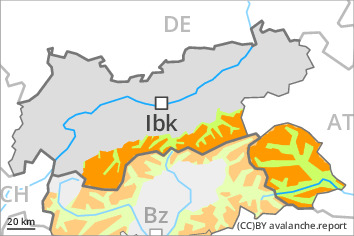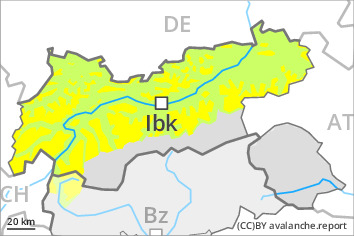
Danger level
 | 2000m |
|  |
|  | ||||
|  |
|  |

Distinct weak layers in the old snowpack are difficult to recognise. Fresh wind slabs require caution.
Avalanches can be released by a single winter sport participant. Natural avalanches are possible in isolated cases, in particular on wind-loaded slopes adjacent to ridgelines.
Mostly avalanches are small. On wind-loaded slopes medium-sized avalanches are possible.
The avalanche prone locations are to be found in all aspects above approximately 2000 m. Caution is to be exercised in gullies and bowls, and behind abrupt changes in the terrain, as well as adjacent to ridgelines.
Individual gliding avalanches can also occur, in particular in the south.
Whumpfing sounds and the formation of shooting cracks when stepping on the snowpack serve as an alarm indicating the danger.
Snowpack
dp.1: deep persistent weak layer
dp.6: cold, loose snow and wind
The old snowpack will be unstable over a wide area. The wind slabs of the last few days are lying on top of a weakly bonded old snowpack. This applies on steep shady slopes above approximately 2000 m, as well as on steep sunny slopes above approximately 2500 m. In some places new snow and wind slabs are lying on surface hoar. As a consequence of a moderate to strong southwesterly wind, avalanche prone wind slabs will form at high altitudes and in high Alpine regions. In the south up to 10 cm of snow will fall in the evening. From a snow sport perspective, in most cases insufficient snow is lying.
Tendency
The avalanche danger will persist.




